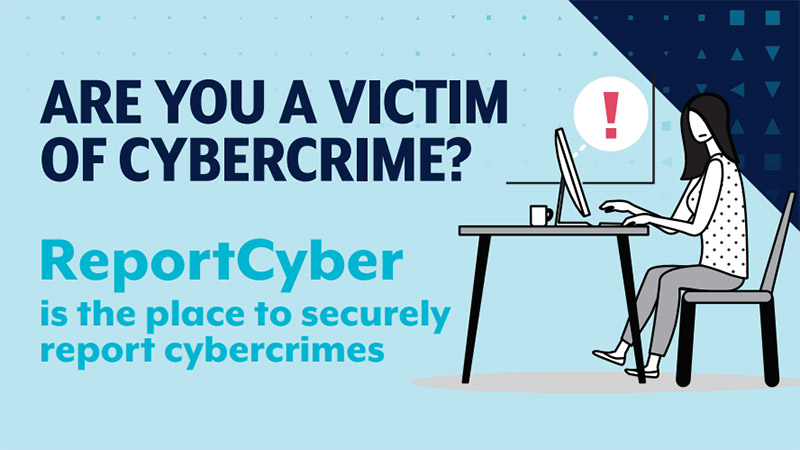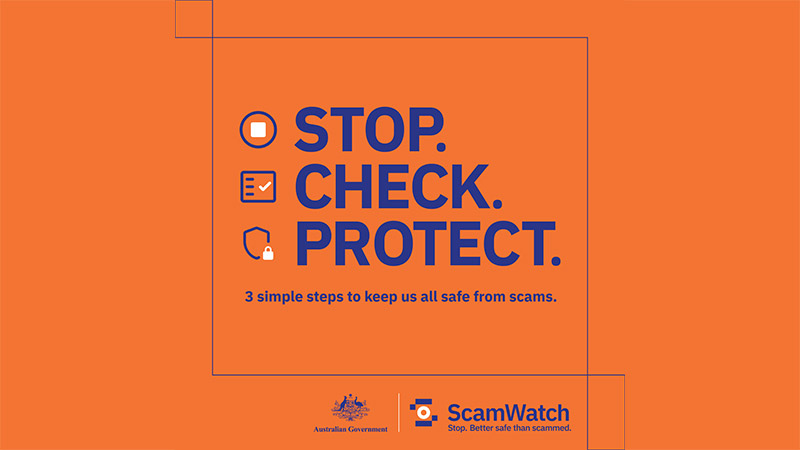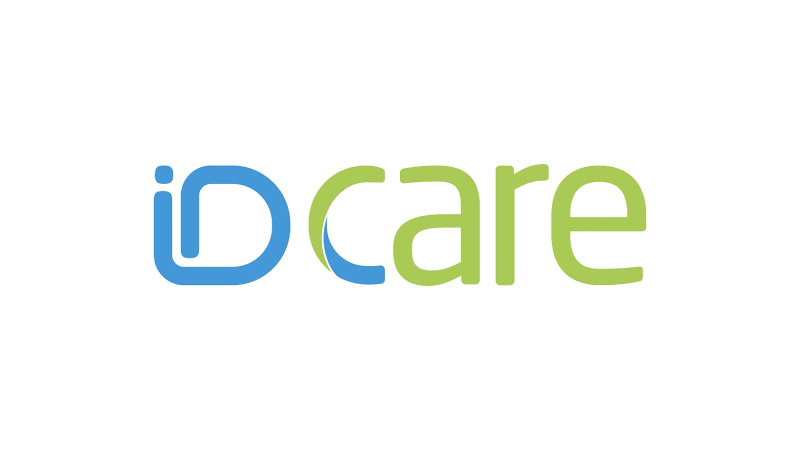-
Stand Up to Fraud
Whether you're a seasoned entrepreneur or just starting your journey, this Fraud Prevention Toolkit has been designed to help you safeguard your business against fraud and ensure your long-term success.


Safeguarding your small business against potential risks and threats
Running a small to medium-sized business (SMB) can be a rewarding if sometimes challenging experience. Business owners need to manage a range of issues, from creating a great customer experience and managing finances, to staying competitive and increasingly, addressing the rising threat of fraud. We provide businesses with the tools and confidence they need to thrive in the digital economy. Our priority is keeping money safe from fraud to offer peace of mind for businesses and their customers. With this toolkit we want to help you understand the different types of fraud that threaten SMBs, better assess the risks to your business, and take practical steps to keep your business, and your customers, secure. By helping you make informed decisions to reduce the risk of fraud, we want to help you get back to what you do best: growing your business.
Dive in, explore the resources, and take proactive steps to protect your business from potential threats.
_______________________________________
1 ACCC, Targeting Scams: Report of the National Anti-Scam Centre on scams activity 2023, April 2024, https://www.accc.gov.au/system/files/targeting-scams-report-activity-2023.pdf
2 ACCC, Targeting Scams: Report of the National Anti-Scam Centre on scams activity 2023, April 2024, https://www.accc.gov.au/system/files/targeting-scams-report-activity-2023.pdf
Identifying, preventing and acting on the most common types of scams and fraud
As part of our ongoing commitment to preventing fraud, we have identified the most common types of scams and fraud that small to medium-sized businesses experience. Learn how to protect your business from falling victim to them:

Phishing scams

Ransomware attacks

Billing fraud and false invoices

Account-to-account payment fraud

Card-not-present fraud

First party misuse

Enumeration and card testing attacks

Skimming fraud
-
Phishing scams


What is a phishing scam?
Phishing scams trick people into giving away sensitive information like passwords, credit card details, or financial data by pretending to be a trusted source, such as a bank or phone network. Scammers often use fake emails or websites to deceive victims. They may also use text messages (Smishing) or phone calls (Vishing) to achieve the same goal. These scams often create a sense of urgency to make people act quickly. Once successful, phishing can lead to identity theft, financial loss, or access to personal accounts.
_______________________________________
³ACCC, Targeting Scams: Report of the National Anti-Scam Centre on scams activity 2023, April 2024, https://www.accc.gov.au/system/files/targeting-scams-report-activity-2023.pdf
-
Ransomware attacks


What is a ransomware attack?
Ransomware attacks occur when hackers lock or encrypt important data, then demand payment, often in cryptocurrency, to unlock it. Victims face tough choices: pay the ransom with no guarantee of data recovery, or refuse and risk losing data permanently, along with financial losses and business disruption. Often these attacks involve the threat of public disclosure of confidential data, which runs the risk of reputational damage for businesses. These attacks usually exploit weaknesses in outdated software or trick users through phishing.
_______________________________________
⁴Australian Government Office of the Australian Information Commissioner, Notifiable data breaches report July to December 2023, https://www.oaic.gov.au/privacy/notifiable-data-breaches/notifiable-data-breaches-publications/notifiable-data-breaches-report-july-to-december-2023
-
Billing fraud and false invoices


What is billing fraud and false invoicing?
Fraudsters may pose as legitimate suppliers or send fake invoices, tricking businesses into paying for goods or services they never received. Insiders could also alter billing systems or inflate invoices to steal money. These scams cause financial losses and can harm vendor relationships. Without proper checks, billing fraud can go unnoticed, resulting in product or service shortages and threatening your business’s financial stability.
_______________________________________
⁵ACCC, Targeting Scams: Report of the National Anti-Scam Centre on scams activity 2023, April 2024, https://www.accc.gov.au/system/files/targeting-scams-report-activity-2023.pdf
-
Account-to-Account Payment fraud


What is account-to-account payment fraud?
Account-to-account payment fraud occurs when fraudsters trick victims into authorising transactions. Often fraudsters will impersonate an individual or organisation, such as a bank or a parcel delivery service and trick the victim into transferring money from their account into an account held by the fraudster. Typically, the fraudster will contact the victim via telephone, text message or email to trick them into handing over their personal details or passwords.
-
Card-not-present fraud


What is card-not-present fraud?
Card-not-present fraud occurs when a fraudster steals financial information through phishing, malware or data breaches, enabling them to make fraudulent purchases. This is referred to as card-not-present (CNP) fraud when stolen card details are used for online or phone purchases without the card being physically present. This type of fraud can lead to significant financial losses for businesses through chargebacks, as they are often held responsible for recovering the money lost by the customer.
_______________________________________
⁶AusPayNet, FY24 Card Fraud Snapshot, Nov 2024, https://www.auspaynet.com.au/insights/blog/Fy24Cardfraud
-
First Party Misuse


What is first party misuse
First party misuse happens when customers falsely dispute transactions, claiming they were unauthorised, or they have not received the product. This causes funds to be returned to the customer, leading to financial losses and reputational damage for the business. Businesses face the challenge of proving legitimate transactions, plus risk penalties, higher fees, or even losing their merchant accounts if chargebacks become excessive.
_______________________________________
7 Merchant Risk Council. 2024 Global Payments and Fraud Report 25th Edition, March 27, 2024 https://info.merchantriskcouncil.org/hubfs/Reports/Fraud%20Reports/2024_Global_Payments_and_Fraud_Report.pdf
-
Enumeration and card testing attacks


What are enumeration and card testing attacks?
Enumeration fraud and card testing attacks happen when criminals try to confirm stolen card details through payment systems. In enumeration fraud, attackers use automated programmes to guess card information like the CVV or expiration date. Card testing involves making small purchases or donations to check if the stolen card details are still valid. Both methods are used to find active cards for larger fraudulent transactions. These attacks can lead to financial losses and more chargebacks for businesses.
_______________________________________
8 https://usa.visa.com/about-visa/newsroom/press-releases.releaseId.19886.html
-
Skimming fraud


What is skimming fraud?
Skimming fraud occurs when criminals use a device, called a skimmer, to steal credit or debit card information. These devices are secretly attached to card readers at places like ATMs, petrol pumps, or self-service checkouts. The skimmer captures the magnetic stripe data from the card, which criminals can then use to create counterfeit cards or make unauthorised purchases. Fraudsters may also use hidden cameras or overlays to capture PIN numbers, allowing them to make withdrawals or fraudulent transactions with the stolen information. Skimming can lead to significant financial losses for businesses and customers.
_______________________________________
Tackling fraud: How ready is your business?
Businesses can stay one step ahead of fraudsters by taking a proactive approach. It’s important to teach yourself, as well as your employees and customers how to spot the risks and stay safe.
Here are eight key strategies to fight fraud:
-
-
Train yourself and employees to identify phishing emails and suspicious activity to minimise the risk of scams.
-
-
Implement MFA for all systems to add an extra layer of security and reduce unauthorised access.
-
-
Ensure yourself and your staff use unique, complex passwords and update them regularly with password management tools.
-
-
Keep all software, including antivirus programmes, updated to patch vulnerabilities and prevent attacks like ransomware.
-
-
Always confirm any unexpected payment requests by contacting the requester directly through official channels.
-
-
Regularly monitor accounts for unusual or suspicious activity, acting quickly to prevent fraudulent payments.
-
-
Use third-party fraud services to provide additional protection and real-time transaction monitoring.
-
-
Create a response plan so you’re clear on the steps to take to protect your business and your customers in the event of a scam.
Get more help on tackling fraud
Useful resources

ReportCyber
Report a cybercrime, cyber incident or cyber vulnerability at cyber.gov.au/report

Scamwatch
If you come across a scam, help us all by reporting it to Scamwatch

IDCARE
Get help from an incident responder or book a cyber advisory session at IDCARE
Sources:
1. New Visa research, based on 1,000 senior SMB decision makers in the UK. Due to be published end of November 2024
2. https://usa.visa.com/about-visa/newsroom/press-releases.releaseId.20491.html
3. https://www.ukfinance.org.uk/news-and-insight/press-release/over-ps570-million-stolen-fraudsters-in-first-half-2024
4. https://usa.visa.com/visa-everywhere/blog/bdp/2022/06/15/what-every-merchant-1655330664445.html
5. https://investor.visa.com/news/news-details/2023/Visa-Research-Highlights-Emerging-Fraud-Schemes-in-Retail-and-eCommerce/default.aspx
6. https://navigate.visa.com/europe/security/what-were-the-major-fraud-and-security-threats-in-2022